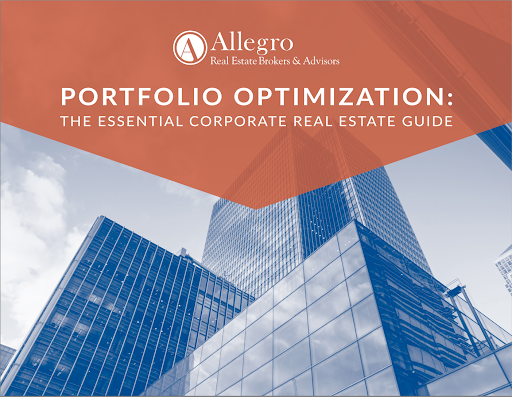Although a commercial real estate acquisition strategy may look different from organization to organization, this multi-step process is critical to ensure your portfolio not only aligns with your goals, but also adds value to your business.
Thus far, our team of real estate experts has discussed how to establish your CRE project strategy and selection criteria, and how to conduct CRE market research and screening. Once your team and real estate broker have reviewed and toured your shortlisted properties, it’s time to seek out decision support.
No matter how thorough your market research may be, it’s essential to present the findings to your leadership team and secure buy-in, or decision support, prior to deciding which property is right for you and your organization. Without it, you’ll likely find yourself retracing your steps in the decision-making process.
Where Does Decision Support Come From?
While each organization’s decision-making support process may look different depending on the organization’s size and the real estate transaction size, common team members in decision support include:
- CEOs
- General Counsel
- CFOs or COOs (both small and large organizations)
- Directors of Real Estate
- Business/Organizational Unit Managers
Whatever the size of your organization, the decision support will likely, and should, come from senior leadership. Your organization may be structured differently than others, but the process remains the same: senior leadership buy-in is key.
This process isn’t dissimilar to other major investments and purchases. Senior leadership generally has the final weigh-in and assumes the responsibility of the decision. It’s unlikely that less experienced team members will find themselves making the final call.
Develop an RFP
Once you have senior leadership’s buy-in, it’s time to draft a Request for Proposal (RFP). Your real estate advisor will be invaluable during this process, helping ensure that you include all necessary items and inquiries. Beyond the essentials of the property and associated items, they will navigate you through all legal terms of a real estate transaction.
The items included in the RFP will vary depending upon whether it is an industrial or office space. Common items for office spaces include:
- Space requirements / square footage
- Lease terms and commencement
- Rental rate
- Space planning & tenant improvements
- Adjustments to operating expenses
- Utilities
- Renewal options
- HVAC
- Parking
- Furniture and equipment
- Voice and data
- Janitorial
- Storage space
- Signage
- Building amenities and improvements
Industrial RFPs often include:
- Space requirements / premises
- Use
- Lease and term commencement
- Rental rate
- Operating expenses / taxes
- Clear heights
- Truck docks and drive-in doors
- Utility requirements
- Sprinkler systems
- Floor loads
- Cranes
- Incentives
- Renewal option
- Purchase option
- Right of first refusal
- Tenant improvement allowance
Once you and your real estate advisor have completed the RFP and it is sent out, you can expect a response within a couple of weeks. However, responses may come in phases. This is especially true if the RFP requires estimates, buy-in, or other time-consuming processes. If you’re considering a Built to Suit (BTS) property, know that it will often require additional phases when comparing new construction to existing buildings.
Analyze Your Financial and Qualitative Information
Once the RFP is underway, your real estate advisor will help you compile, sort, and qualitatively and financially analyze the information. They’ll do so in a way that helps you best position what you’ve learned from the RFP, and in a manner that compares options on an apples-to-apples basis and builds the best business case and recommendations for senior leadership.
The financial, or quantitative, analysis reveals the average annual occupancy costs. The qualitative analysis covers how clients will perceive the building and its amenities, as well as the building’s access and visibility.
Present the Findings to Leadership
Once you’ve concluded the analyses, you’ll then need to present the financial and qualitative findings to leadership and relevant stakeholders. Like other presentations, ensure that you prepare the information in a way that best positions your findings and recommendations.
During preparation of the business case, turn to your real estate advisor for assistance in transforming complexity into clarity, and positioning your findings within a compelling presentation.
It’s important to anticipate that not every presentation will result in consensus of the decision-makers. More often than not, members of senior leadership will need to discuss after the presentation, before either requesting more information, or proceeding to the lease negotiation phase.
Ready to speak with an Allegro team member?
We’d be happy to answer any questions you might have regarding your real estate acquisition strategy. Contact us today for a free 30-minute consultation to discuss the necessary next steps in expanding your commercial real estate portfolio.







